There is no doubting the beauty of butterflies and how they make us feel, but the adult stage of these ephemeral creatures only accounts for one of four stages of the lifecycle, and the adult butterfly may be present for only a very short period of time when compared with the other three stages. If they avoid predation and survive the vagaries of a British summer, the adults of some species have a lifespan of just a few days or, at most, a couple of weeks. This is all the time they have to find a mate and for the females to lay their eggs. A point which is often overlooked, therefore, is that over 75% of the life cycle of a butterfly is spent in an immature stage as either an egg, larva, or pupa, and is usually completely inconspicuous. Having said that, there are, however, several species which hibernate or over-winter as adults and, of these, the Brimstone is generally acknowledged as being the longest lived, surviving for up to 11 months as an adult.
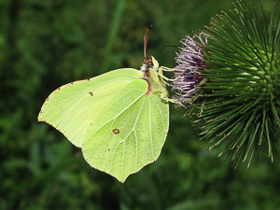 | 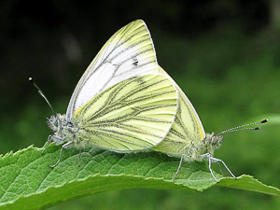 | 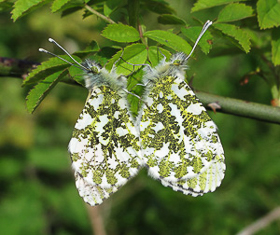 |
| Brimstone adult Image © Vince Massimo | Mating Green-veined White Image © Vince Massimo | Orange-tips mating Image © Vince Massimo |
Once mated, a female butterfly will usually search out a larval food plant on which to lay her eggs. This can be a single plant species, such as Kidney Vetch (Anthyllis vulneraria) in the case of Small Blue, or groups of related species such as those of the common Crucifers, which are used by the Large White and its close relatives.
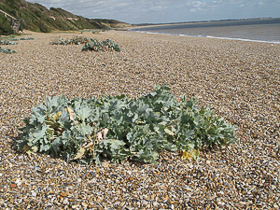 |
| Sea Kale (used by Large White and Small White) Image © Vince Massimo |
Those with the most cosmopolitan tastes are species like Green Hairstreak and Holly Blue which utilise a wide range of unrelated host plants. However not all butterflies will lay directly on the food plant. For instance, although the host plant for the Silver-washed Fritillary is the Common Dog-violet (Viola riviniana), the female will typically deposit her eggs within a crevice on the bark of a nearby tree. This is where the emerging larva will spend the winter before descending to the food plant the following spring. At the other end of the scale, the strategy of the Marbled White is different again, with eggs distributed in flight over suitable habitat.
Depending on the species, eggs can be laid singly or in batches and some are far easier to find than others. In spring, the skittle-shaped eggs of the Orange-tip are readily located on the developing flower buds of Garlic Mustard (Alliaria petiolata) or Cuckoo Flower (Cardamine pratensis). These orange-coloured single eggs stand out quite well against their background and several can often be found on the same plant. Those of the Large White are generally similar in colour and appearance, but are laid in batches of 40-100 (usually on your best cabbages or nasturtiums) and are very prominent in the summer months. In winter, the easiest and most rewarding eggs to find are the bun-shaped eggs of the Brown Hairstreak. Although only 1mm in diameter, they glow like little pearls on the bare dark stems of Blackthorn (Prunus spinosa) and are exquisitely sculpted when viewed close up. This is probably the only species where the eggs are easier to find than the adults.
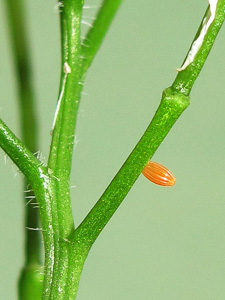 | 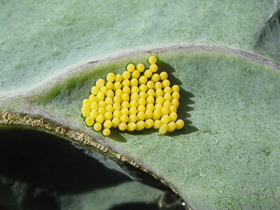 | 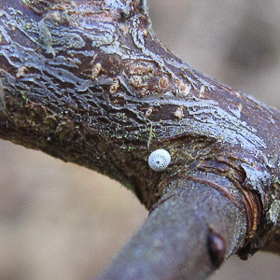 |
| Orange-tip egg Image © Vince Massimo | Large White eggs Image © Vince Massimo | Brown Hairstreak egg Image © Vince Massimo |
Of course there is one other sure way of finding any egg and that is to watch it being laid. This can either be a case of pure luck or one of astute observation. If a butterfly is seen crawling over a plant (but not feeding), or is fluttering low over the ground or near to their larval food plant, stopping regularly for a few seconds, then it is likely to be a female either laying or looking for sites to deposit eggs.
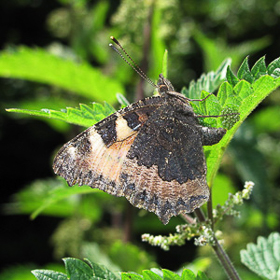 |
| Small Tortoiseshell ovipositing Image © Vince Massimo |
Depending on the species, the egg will either hatch within a few weeks or lie dormant in order to see out the winter.
This stage of the life cycle is sometimes as difficult to find as the smallest of eggs, partly because some larvae hardly ever venture into the open, or only emerge at night. Many others are often hidden in the grasses or shrubs on which they feed or up in the canopy of their host tree. Even when you know where to look, they can be almost impossible to spot, such is the effectiveness of their camouflage.
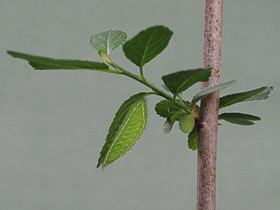 |
| Brown Hairstreak larva Image © Vince Massimo |
A caterpillar is essentially an eating machine and its life is characterised by intense bouts of feeding interspersed with periods of rest. As it grows, it goes through a number of skin moults and each stage between moults is referred to as an instar.
Depending on the species, the larva will either feed and fully develop into a chrysalis, or go into hibernation on the approach of winter. Interestingly, the Speckled Wood is the only British species that can overwinter in more than one stage - in this case, as either a larva or a pupa. For the summer species, the most prominent larvae are those of the Peacock, Small Tortoiseshell and Large White which live and feed communally on their food plant, usually in a conspicuous tent of silk called a larval web.
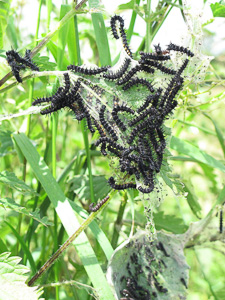 |
| Peacock larval web Image © Vince Massimo |
For these species, safety in numbers is their way of defending themselves from predators and this strategy, in some species, also allows group basking which serves to raise the body temperature of the larvae so that they can remain active and digest food when ambient levels fall. Other species, like the solitary larvae of Red Admiral, also protect themselves by forming a tent, but create this structure from a single leaf or group of leaves, usually on Common Nettle (Urtica dioica). These structures have a characteristic appearance and differ slightly from shelters made by other insects which also live or feed on nettle. However, many an experienced observer has investigated one of these tents, only to find an angry spider inside.
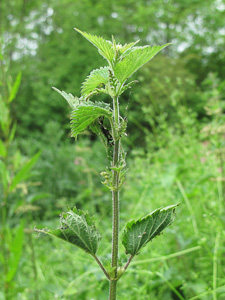 |
| Red Admiral larval tent Image © Vince Massimo |
One of the relatively few solitary species whose larvae live entirely in the open is the Orange-tip. The pale green caterpillars are usually found feeding or resting on the seedpods of Garlic Mustard or Cuckoo Flower.
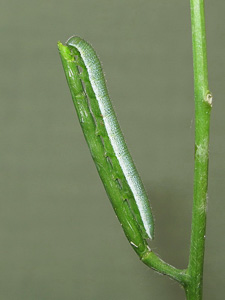 |
| Orange-tip larva Image © Vince Massimo |
Garlic Mustard is easier to search then Cuckoo Flower because the seedpods are at a convenient height and the multiple flower heads will often support a number of larvae. While checking this plant, it is also worth looking at the leaves further down the stem because this is where you may find the larvae of Green-veined White.
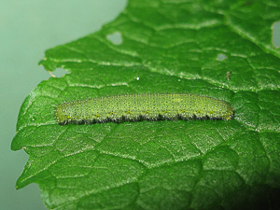 |
| Green-veined White larva Image © Vince Massimo |
The appearance of the larvae of both Orange-tip and Green-veined White is adapted to blend in with the part of the plant on which they feed and this is a good example of two different species sharing a common food plant, without competing for its resources. However the Orange-tip larvae do not have it entirely their own way because they are cannibalistic if they encounter another of their kind. While it is also possible to find Small White and Large White larvae on the same host plant they are, however, tolerant of each other.
Other possible ways of locating hard-to-find larvae of other species is to look for signs of characteristic feeding damage to leaves and seedpods, or even fresh droppings which is collectively known as frass.
At the end of their growth cycle, which may follow 4 or 5 skin moults, most larvae will usually find a sheltered spot and prepare to pupate.
When ready to pupate the larva will cease feeding and become restless. In most species the larva eventually secures itself to its chosen location, either with its body parallel to a flat surface (with a silk pad at the rear and a silk girdle around its body) or suspended head down, attached by its rearmost claspers to a pad of silk on a horizontal or sloping surface.
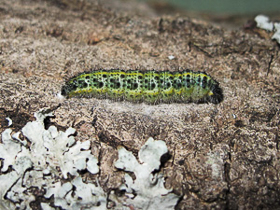 | 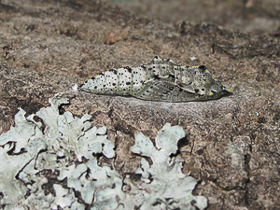 |
| Large White larva preparing to pupate Image © Vince Massimo | Large White pupa Image © Vince Massimo |
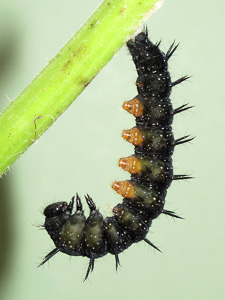 | 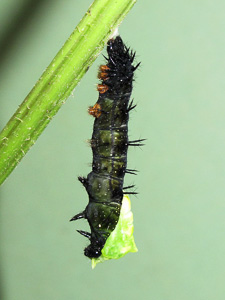 | 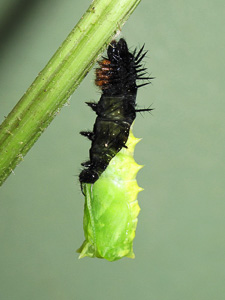 |
| Peacock larva preparing to pupate Image © Vince Massimo | Peacock larva pupating Image © Vince Massimo | Peacock larva pupating Image © Vince Massimo |
.jpg) | 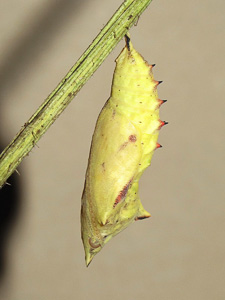 |
| Peacock pupa (freshly emerged) Image © Vince Massimo | Peacock pupa Image © Vince Massimo |
Finding pupae in the wild, however, is generally quite difficult. Some pupae are completely hidden underground or inside grass stems or within the curl of a dry leaf, while others rely on their form, patterning and cryptic colouration to provide perfect camouflage, mimicking anything from withered leaves to bird droppings.
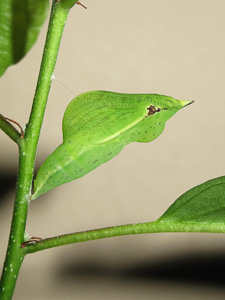 | 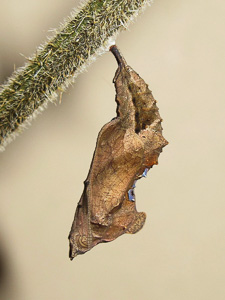 | 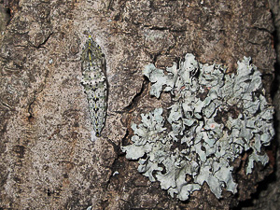 |
| Brimstone pupa Image © Vince Massimo | Comma pupa Image © Vince Massimo | Large White pupa Image © Vince Massimo |
Some species, like White-letter Hairstreak, will stay in the tree where they fed, while others will descend to the ground and pupate on dry stems, under living leaves or in clumps of vegetation. Species like Large White will travel some distance from their food plant to seek out more stable sites, such as the undersides of branches or window ledges, on which to pupate and may even be found inside sheds and greenhouses.
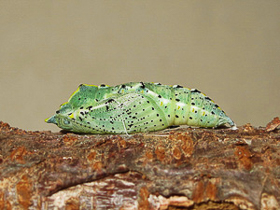 |
| Large White pupa Image © Vince Massimo |
On the other hand, some species, such as the Adonis Blue, have formed mutually beneficial associations with ants and will be protected by them, with the larvae sometimes being taken into their nests where they pupate in safety. At the extreme end of the scale is the strategy of the larva of the Large Blue which, partly through the use of chemical secretions and behaviour, tricks the ants into believing it is one of their own stray grubs and is subsequently taken to the nest. Here its diet changes from vegetarian to carnivore as it stops feeding on Thyme flowers and starts feeding on the developing ant larvae before, ultimately, pupating in the ant nest.
One of the easiest pupae to locate is that of the Red Admiral which invariably stays on the food plant and is found in a tent of leaves loosely bound together with strands of silk. A bit more challenging is the pupa of the Orange-tip which can sometimes be found on the drying stems of Garlic Mustard from July onwards. It is always worth checking this plant in winter when most of the other vegetation has died back, particularly if there are old signs of feeding damage on the now empty and desiccated seedpods. The garden plant Honesty (Lunaria annua) is another good plants to search for Orange-tip pupae.
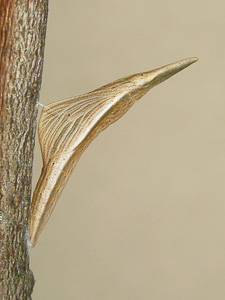 |
| Orange-tip pupa Image © Vince Massimo |
The butterfly's metamorphosis continues in the pupa as the internal structures of the larva are transformed into the adult butterfly. The pupa will either hatch within a few weeks or overwinter, depending on the species. In any event, the days preceding the emergence of the adult (or imago) are the most enthralling. In some species the pupa merely darkens, but in others the pupal case becomes transparent, allowing the colours of the upper sides of the forewings to show through. This is particularly spectacular with the Whites, where even the hairs on the body will become visible. For sheer brilliance however, the male Orange-tip is hard to beat.
.jpg) | 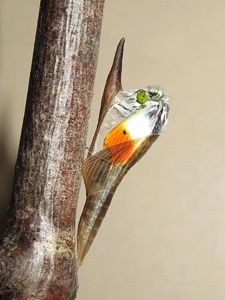 |
| Orange-tip pupa (1 day before emerging) Image © Vince Massimo | Orange-tip emerging Image © Vince Massimo |
The amount of time between the first subtle colour changes to the pupa and the adult emerging depends on the species, but it is generally between 2 and 5 days. It will usually take 60 to 90 seconds for an adult to completely emerge from the pupa and approximately a further 30 minutes for it to expand its wings. A couple more hours will pass while the wings harden, and before the butterfly is capable of sustained flight.
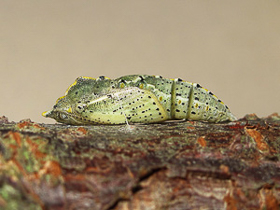 | .jpg) |
| Large White pupa Image © Vince Massimo | Large White pupa (hours before emergence) Image © Vince Massimo |
.jpg) |
| Large White pupa (adult emerging) Image © Vince Massimo |
.jpg) | .jpg) | 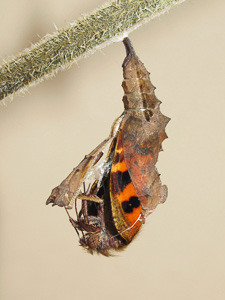 |
| Comma pupa (1 day before emergence) Image © Vince Massimo | Comma pupa (minutes before emergence) Image © Vince Massimo | Comma pupa (adult emerging) Image © Vince Massimo |
All of these life-cycle stages can readily be observed in your own garden by providing the necessary food plants for use by the species that normally visit. For many of our commoner species, this usually means growing some nettles and Garlic Mustard in a sheltered sunny spot, together with a couple of sacrificial cabbages. If there is no room in the garden, then put them in pots on the patio. If you want some "proper" flowers, then plant Honesty for Orange-tips, while Nasturtiums should cater for Large and Small Whites. However, providing good sources of nectar throughout the season is also necessary in order to attract and sustain the adult butterflies.
Finding and observing the early stages of butterflies is not only rewarding in its own right, but generates a greater understanding and increased appreciation for these beautiful creatures and their habitats. Often it also evokes fond childhood memories and is a perfect way of enthusing youngsters into the wonders of the natural world.
You can find some photo-documented life cycle reports of the following species here on the dispar website.
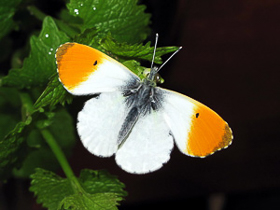 | 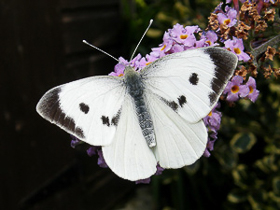 | 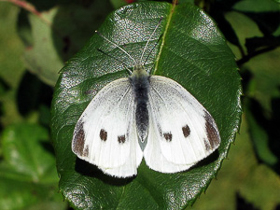 |
| Orange-tip Image © Vince Massimo | Large White Image © Vince Massimo | Small White Image © Vince Massimo |
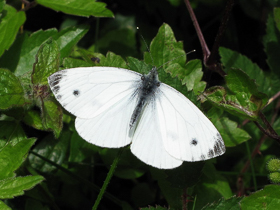 | 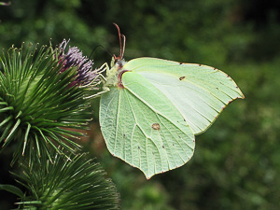 | 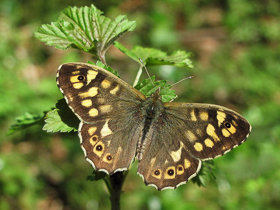 |
| Green-veined White Image © Vince Massimo | Brimstone Image © Vince Massimo | Speckled Wood Image © Vince Massimo |
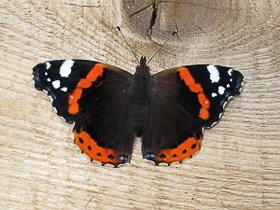 | 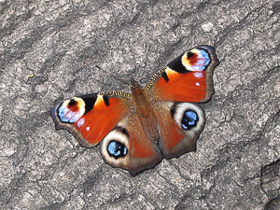 | 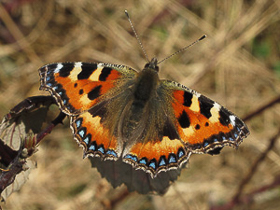 |
| Red Admiral Image © Vince Massimo | Peacock Image © Vince Massimo | Small Tortoiseshell Image © Vince Massimo |
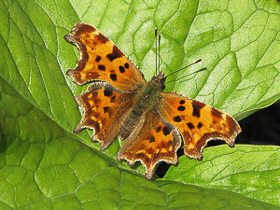 | 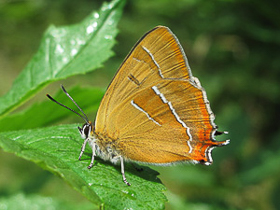 | 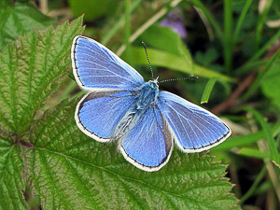 |
| Comma Image © Vince Massimo | Brown Hairstreak Image © Vince Massimo | Common Blue Image © Vince Massimo |